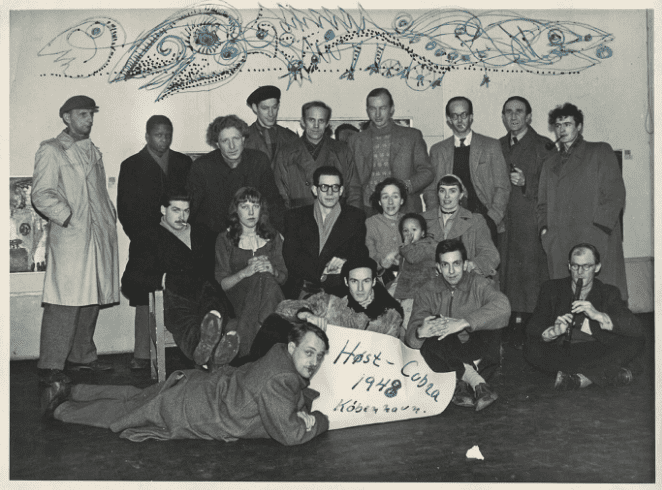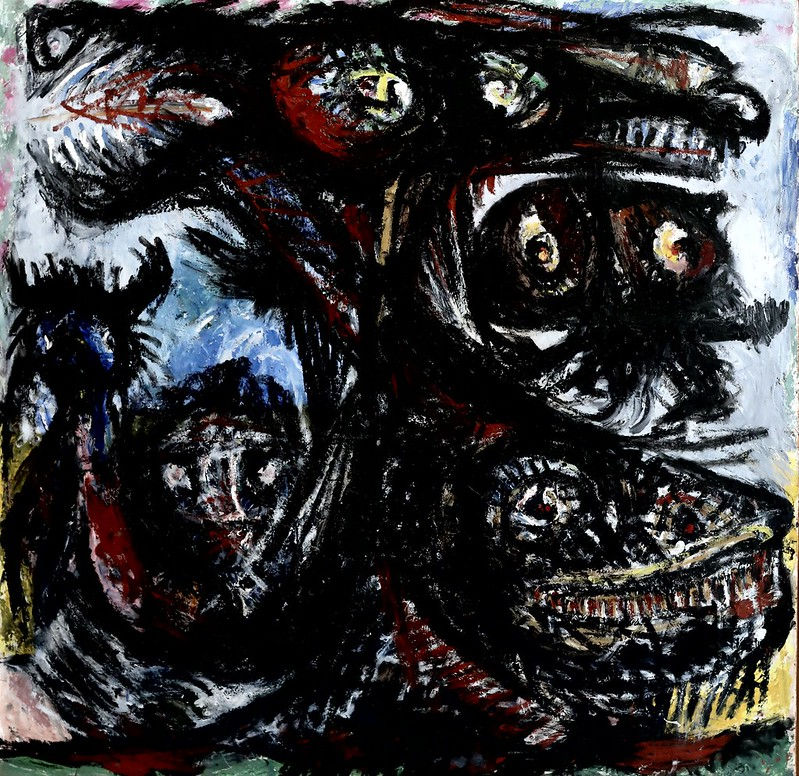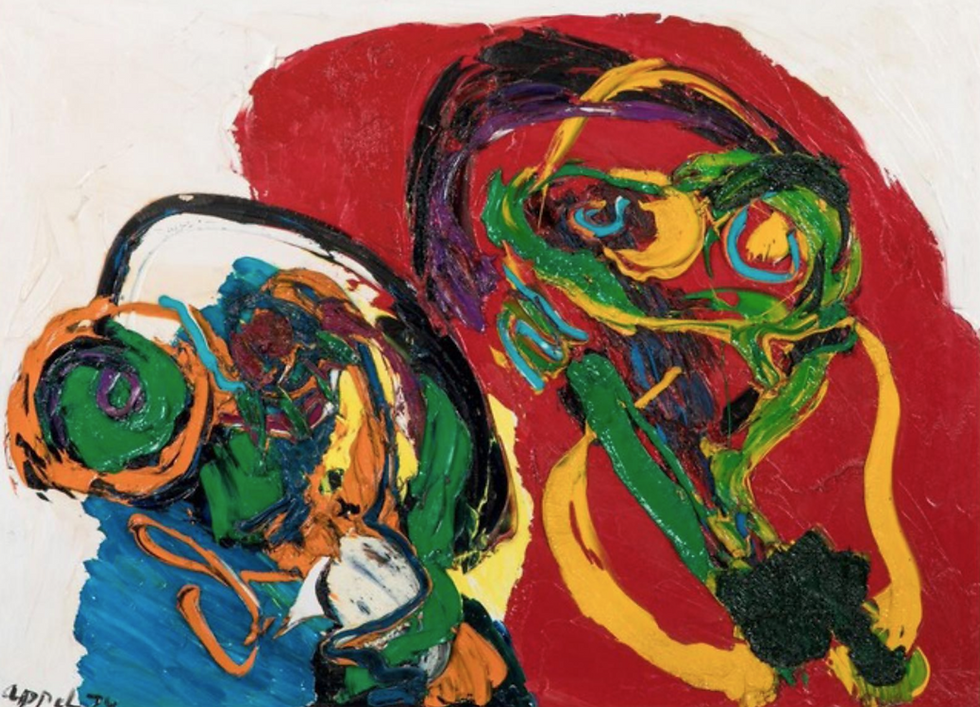It’s messy, it’s expressive, it’s CoBrA
- Matthias Find
- Mar 15, 2025
- 4 min read
Post-war Europe, 1948. An art world dominated by Abstract Expressionism and the formless entities that come with it. In this trying time, a group of artists hailing from Copenhagen, Brussels, and Amsterdam would come together to seek a new approach to the theory-driven decadence of the time, art that could inspire social and political change by awakening the dormant creativity that resided in everyone. This group called themselves CoBrA, an abbreviation of the capital cities of the founders.

The Point of Origin
The tale of this story starts in 1946, Paris, when Dutch artist Constant Nieuwenhuys, better known by the mononym Constant, met Asger Jorn at an experimental art exhibition. At the time, Jorn was already the editor of the Dutch magazine Hellhesten (Hellhouse) and had previously been a student of Kandinsky, a key figure of the Bauhaus. It was here where Jorn first introduced experimental art to Constant and the subsequent oppositional stance towards functionalism, believing that art could be both beautiful and serve a deeper social purpose.
Christian Dortremon – a Belgian painter and poet– was soon contacted the following summer, and the three creatives would soon form a partnership governed by a shared love for the spontaneous and instinctual psyche behind art. This coalition eventually led to the creation of the eponymous Cobra magazine, where Jorn would write, "By means of this irrational spontaneity……we get closer to the vital source of life.’’ When 1948 came around, artists Karel Appel, Corneille, Joseph Noriet, and the aforementioned trio all signed the "La cause était entendue" ("The Case Was Settled"), a play on the Revolutionary Surrealists' doctrine “La cause est entendue’’ (“The Case Is Settled”) and the manifesto that bound all CoBrA artists together.
Desire Unbound
When you look at CoBrA art, you’ll immediately notice a few discerning factors: One, the unrestrained use of vivid colors invites the viewer into this world of free-flowing expression that is imbued with energy, creating an atmosphere that is both haunting yet familiar. This is combined with the variety of textures used, ranging from clearly defined borders to violent, free-flowing brushstrokes that likens itself to something a child would draw. However, this connection is no coincidence, as CoBrA artists often cited the drawing of children and the mentally ill as sources of inspiration, with Appel stating, “We wanted to start again, like a child.’’ Appel regarded these sources as the ultimate fountain of creativity, one which had not yet been tainted with the realities of the world, and saw it as a gateway into decamping from the sterile norms and traditions of the current art world. Two, the employment of various symbols and motifs - another aspect inspired by children and folklore- found within CoBrA art creates this “universal language” where art could be made to not only be expressive to all that saw it but to free itself from cultural and societal norms.

I find this expressed best in Asger Jorn’s 1950 work “The Eagle’s Share 1”, made as part of his Krigsvisioner (War Visions) series. Within this work, Jorn moulds and restructures the German crest into a terrifying double-headed monster, with its rough and jagged brushstrokes permeated by patches of red and yellow. The eagle takes up the large majority of the piece with its domineering frame, enveloping the other animalistic figures in its mass. By utilizing an internationally recognized symbol of national pride and converting it into a hideous creature, Jorn is able to translate his artwork and subsequent message into one that spans time and space, achieving that “universal language” that CoBrA so desired. Finally, the form that bound these childlike figures and symbols together is one of simplification and distortion, with the complex form being translated into a flat landscape that still exhibits whimsicality and spontaneity. It is within this gestural abstraction that the line between figuration and abstraction is blurred, and the innate primal creativity dormant in all of us is expressed most freely. This blurring of boundaries is what allows CoBrA art to be so representative of both the artists and the audience, creating works that are evocative and long-lasting.
A return to the very start
Underneath these distinct visual characteristics, a shared philosophy serves as the central foundation for almost all CoBrA art: an unbridled desire to break away from the human form. And what better way to do that than to return to where it all began?

After the war, debates on what it truly meant to be human began to arise, with philosophers such as Martin Heidegger, Albert Camus and Jean-Paul Sartre all having conflicting viewpoints on the matter. In a way- as first posited by art historian and critic Hal Foster- CoBrA art can be seen as the artistic intervention to these debates, as it places animals as the entity closest to the basic source of life as opposed to humans. As stated in a letter sent by Jorn to Constant in 1950 “We must portray ourselves as human beasts.” Much like an animal, CoBrA art placed the unification of species- in this case humans- above all else, rejecting the classist mentality and societal divide caused by modern society. Through this, CoBrA art was able to maintain its spontaneous approach to art while simultaneously expressing the beliefs of the artist in a universal vernacular.

Other References:





first